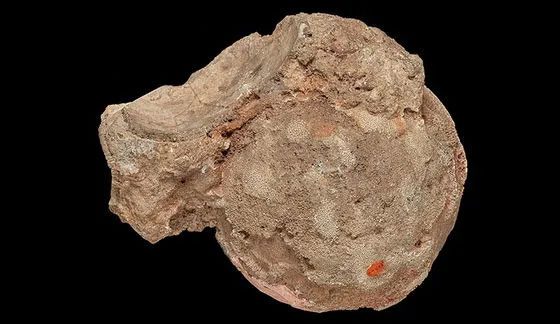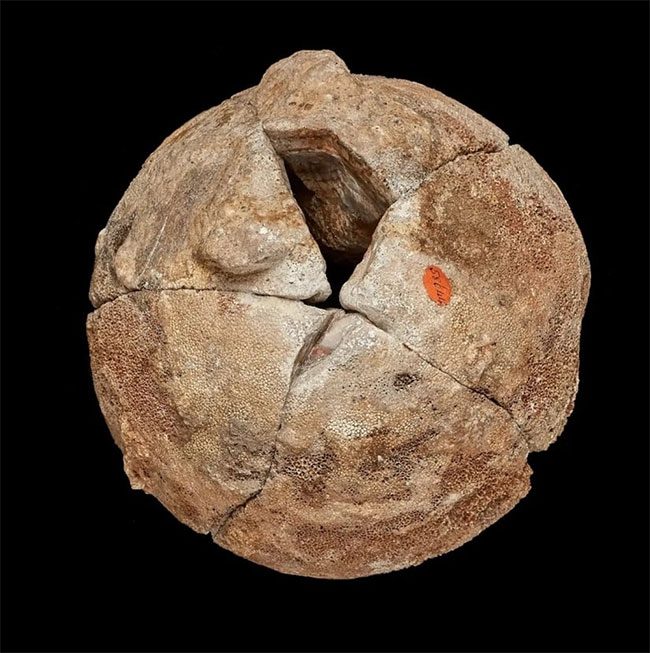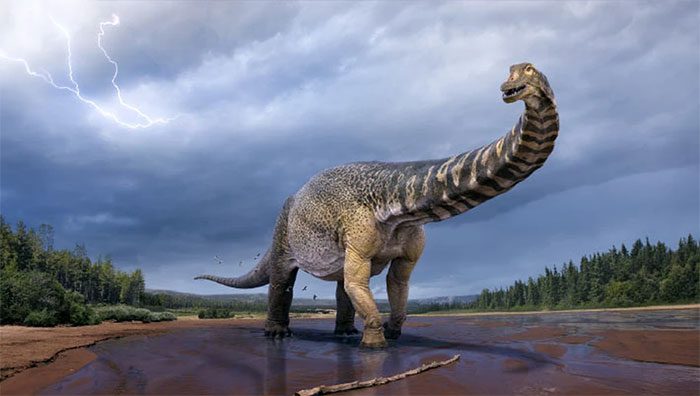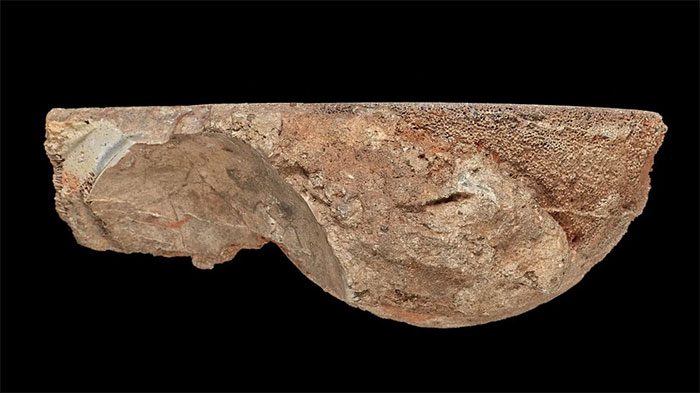After 140 years, museum staff discover that the stone thought to be agate is actually the egg of a giant “monster” species.
According to Live Science, a rare event occurred at the Natural History Museum in London, England. Scientists discovered the truth about a stone in the museum’s Mineral Collection, which had been held there for 140 years (since 1883) and was cataloged as agate. This stone was excavated by Charles Fraser in India between 1817 and 1843.
The agate stone is white with hints of light pink. Its surface is brown and rough rather than smooth. The stone is round, with a width of about 15 cm.

The surface of the stone is brown, uneven, and rough. (Photo: Live Science).
However, during a trip to a mineral exhibition in France, Robin Hansen, the curator of the museum’s Mineral Collection, saw a stone that closely resembled the one on display. Hansen remarked: “At that moment, I was browsing through the booths at the exhibition. Someone showed me a dinosaur egg that had been removed from its shell. It was also round, had a rough surface, and the inside looked like agate. At that time, the image of the ‘agate stone’ at the museum flashed through my mind. They really looked very similar.”
Upon returning to the museum, Hansen took the stone to the department responsible for dinosaur research for thorough examination. Experts decided to perform a CT scan to confirm Hansen’s suspicions.
This time, they discovered that the shell surrounding the agate layer had a structure very similar to that of an eggshell. Additionally, they noted that the stone was made up of multiple fused objects. All the collected information strongly indicated that the stone is actually an egg of a giant “monster” species.

The agate stone displayed in the museum is actually a dinosaur egg. (Photo: Live Science)
Based on the location where the specimen was found in India, along with its size, shape, and surface characteristics, scientists concluded that this is an egg from a dinosaur known as Titanosauria. The egg is believed to be about 60 million years old, from a time when dinosaurs were the most common species in India. In early 2023, scientists discovered a large number of nests of the Titanosaur in India.
Paul Barrett, a paleontologist at the Natural History Museum in London, stated: “Most of the dinosaur fossils found in India belong to the Titanosaur species.”

Titanosaurs belong to a group of very large dinosaurs. (Photo: Pinterest)
Titanosaurs are part of the sauropod group of gentle, herbivorous dinosaurs. They represent the largest size group among all dinosaurs, hence the prefix “titan,” referring to giants in Greek mythology. At birth, Titanosaur young were only the size of a newborn baby, weighing 2.7-3.6 kg. In just a few weeks, they could grow to the size of a hound, weighing 32 kg. After 20 years, they could grow larger than a school bus.
The Titanosaurians are the last remaining group of long-necked dinosaurs following the extinction event at the end of the Cretaceous period. Titanosaurs were massive, laying approximately 30-40 eggs at a time. If these eggs had the chance to hatch and mature, a Titanosaur could weigh up to 70 tons. Despite their large size, Titanosaur eggs are relatively small, with diameters ranging from 12 to 15 cm.

Although Titanosaurs are large, their eggs are quite small. (Photo: Live Science)
According to Barrett, Titanosaurs employed a strategy of laying about 30 to 40 eggs at a time. Due to their massive size, females would use vegetation or soil to cover the eggs for incubation. This behavior is quite similar to how sea turtles or crocodiles lay their eggs. The Titanosaurs in India may have laid their eggs in warm soil near volcanoes to keep them warm. This is why scientists have found many fossils of Titanosaurs among layers of volcanic rock in an area known as the Deccan Trap, a large region of volcanic rock located on the Deccan Plateau in central India.
Subsequently, a volcanic eruption suddenly occurred, causing the eggs to become encased in solidified volcanic rock after an eruption. The internal structures eventually decomposed, and silica-rich water seeped through the rock into the egg cavity, creating the agate pattern we see today.




















































